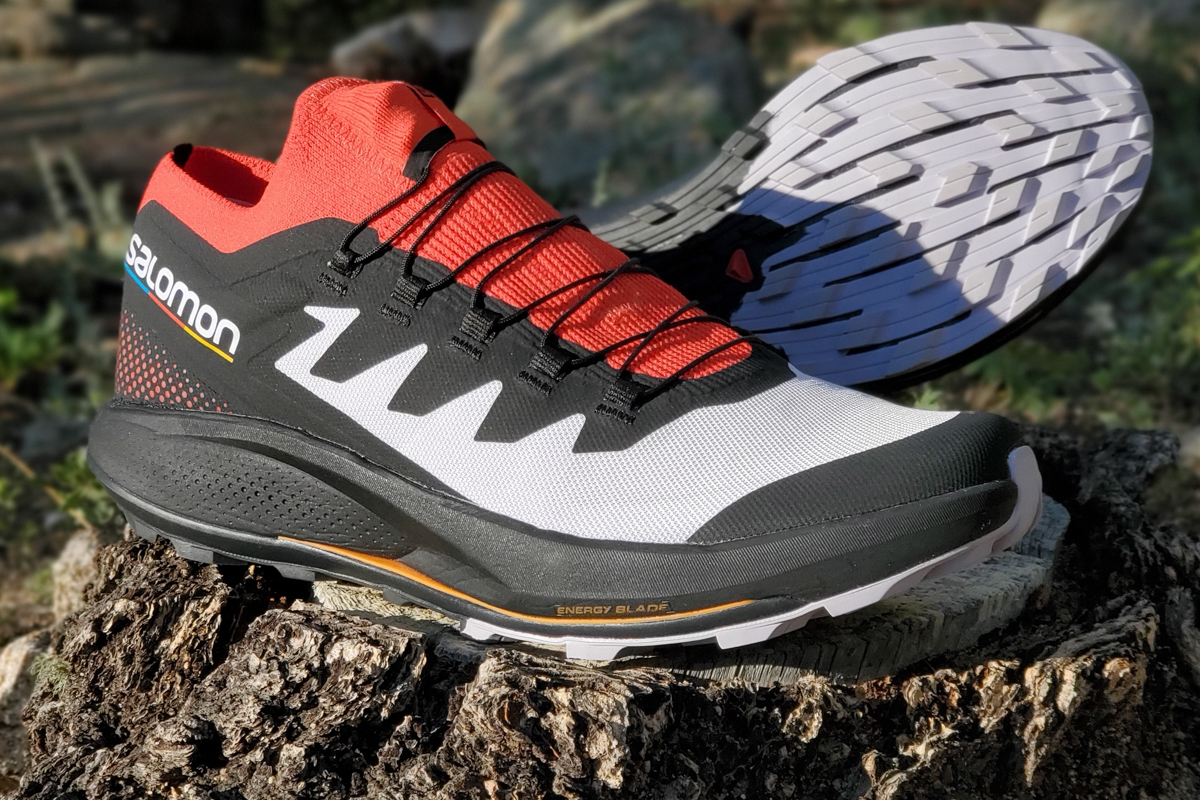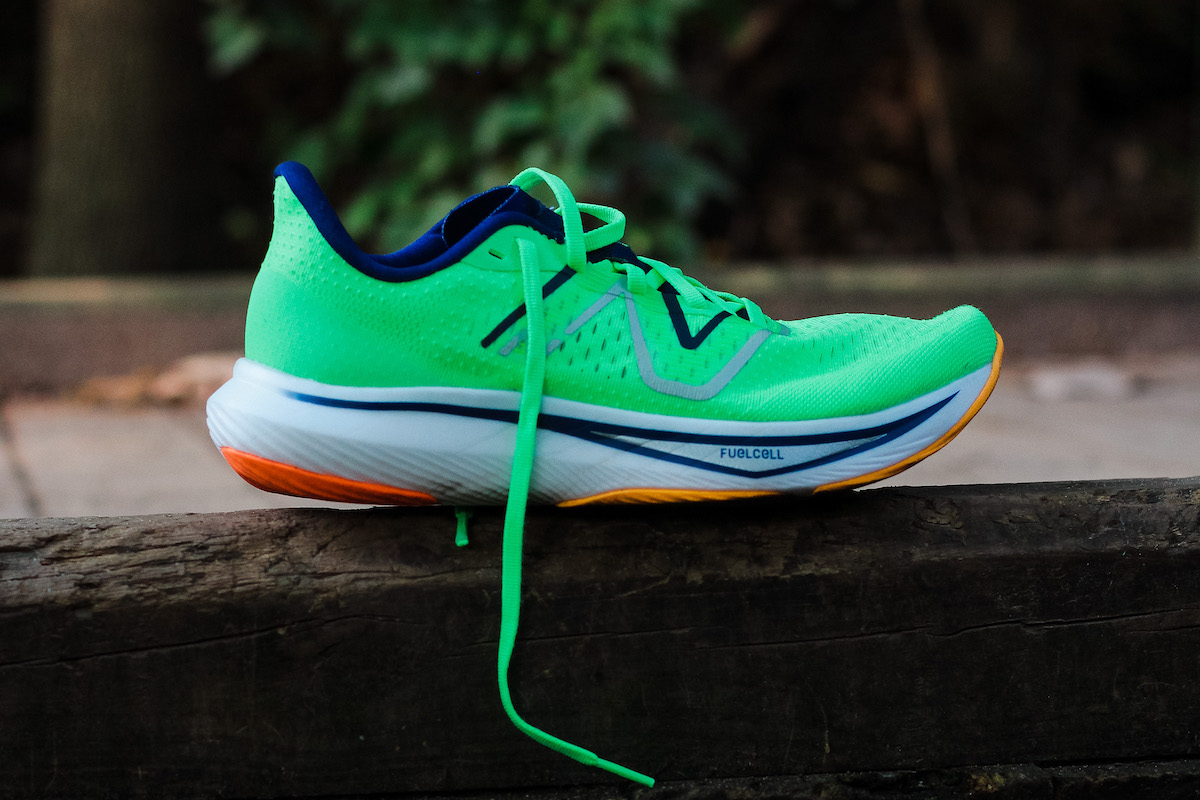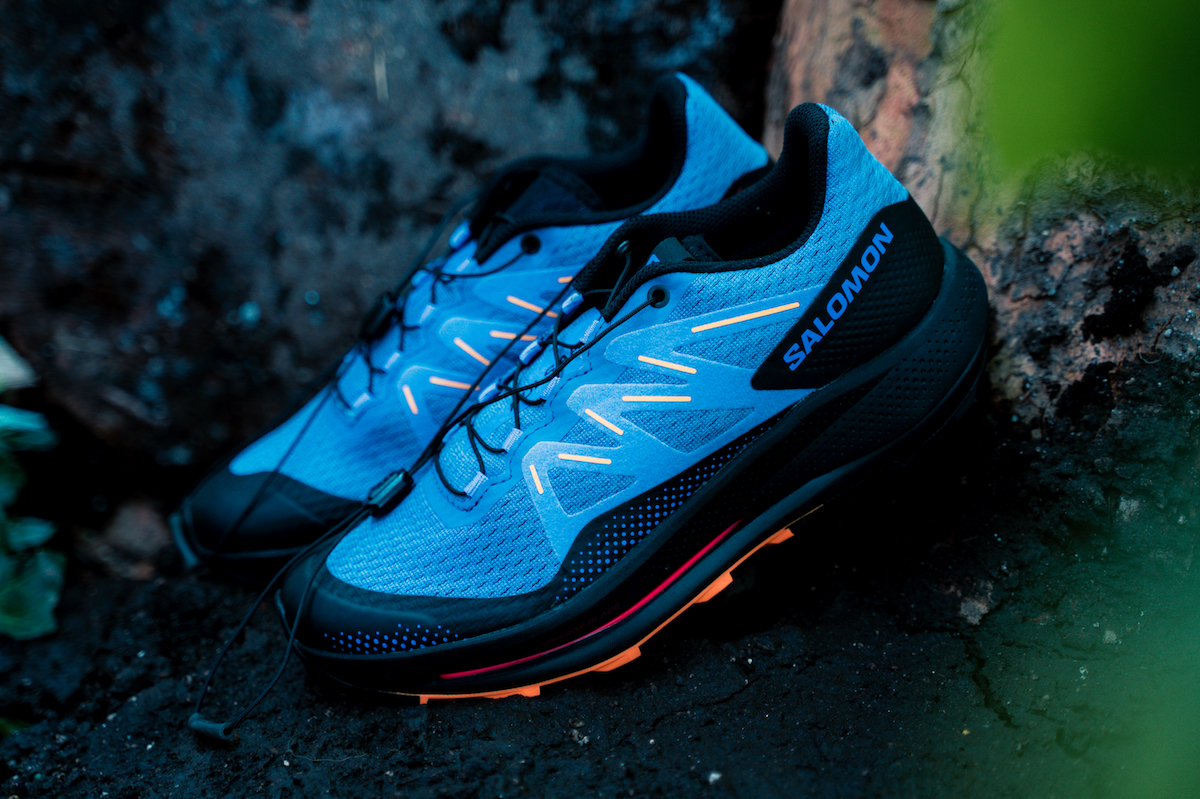
We independently review everything we recommend. When you buy through our links, we may earn a commission.
Weighs 9.8 oz. (280 g.) for a US M9 / US W7.5
It’s almost the same as the Pulsar Trail Pro… almost
Still slim, still stylish, still Salomon
Could it be the best entry point for plated trail shoes?
Available now for $130
SAM: When I worked at Eastern Mountain Sports before they purged all stores south of New England (RIP EMS Annapolis), I’d fit customers for shoes along what I called a “footwear needs scale.” On one end, people just needed basic, casual hikers. They’d find their way into the Merrell Moab, the Vasque Breeze, or whatever Oboz was rolling with at the time. As customers decided they needed more, they’d try to push for something burlier, like the Vasque Sundowner — a boot whose price tag seemed to describe its weight more than its comfort. My goal, as a mostly bored retail worker with a limited set of options, was to push them to the Salomon XA Pro 3D Ultra instead. It checked the boxes for weight, support, and price, with an unbelievable construction to match.
Since then, hiking boots have fallen prey to the rise of the trail runner. Salomon still offers its eighth-generation XA Pro 3D Ultra, but now they’ve expanded far beyond that point. The brand’s most recent introductions are the Pulsar Trail and Pulsar Trail Pro — two entries into the red-hot plated trail market.
Both versions of the Pulsar share Salomon’s proprietary Contagrip outsole, dual density Energy Surge midsole (32.6mm in the heel, 26.6mm in the forefoot), Endofit sleeve, and Quicklace pull laces. They also share an Energy Blade TPU composite plate sandwiched between the two layers of Energy Surge foam. It almost sounds like Salomon messed up on design day, but there’s one key difference. The plate for the standard Pulsar Trail (this shoe) is softer and more pliable than its stiffer, more expensive partner in the Pulsar Trail Pro.
This should be a recipe for a winner of a shoe. We’ve enjoyed some recent shoes with similar non-carbon plates, like the Saucony Endorphin Speed 3 (which has a nylon plate), and some other Salomon options with Energy Surge, like the S/Lab Phantasm. That said, we all know how easy it is to mess up a recipe, so how did the Pulsar Trail fare?
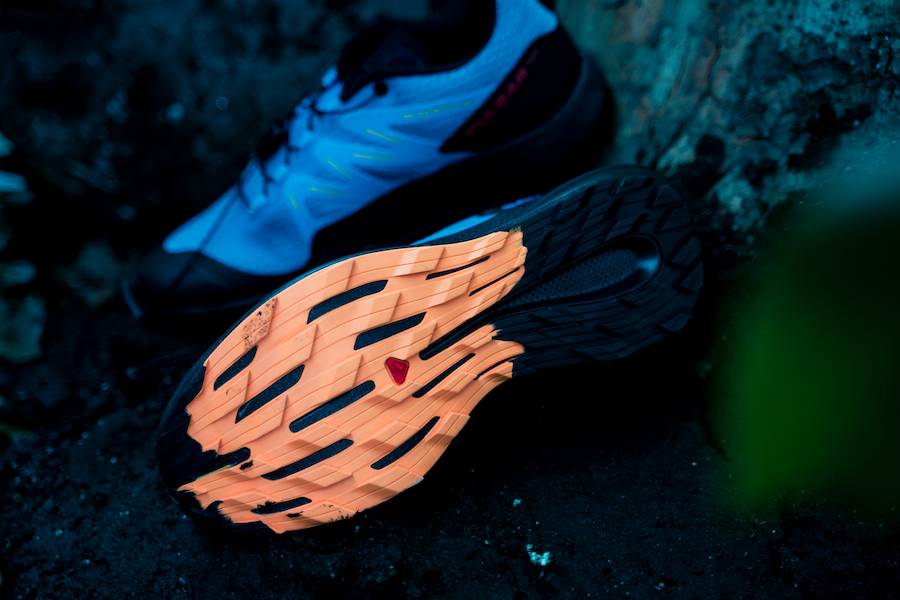
SAM: Salomon certainly knows how to make a shoe. The Pulsar Trail looks and feels like a shoe that will propel you right through whatever your next run can throw your way. Salomon’s design team has always been able to put out footwear that looks smoothly aggressive, and the Pulsar Trail is no exception. Even the sidewall cutouts exposing the Energy Blade plate — which is boldly labeled as such — manage to look purposeful, like an exhaust port label on an airplane, instead of flashy and showy as they might look on another shoe.
The upper has plenty of cushion but feels roomy enough in the toe box. There’s a lot of padding in the heel support (perhaps too much, but that’s for later), and the Endofit sleeve secures the midfoot well without creating pinch points. The double layer of fabric wrapping the toebox is tough but comfortable. If you haven’t used a Quicklace shoe, it can take a little tightening and adjusting to find that proper place between too loose and too tight, but the learning curve isn’t steep. I don’t think I’d say the system is better than laces, but I love the clean reassurance of tucking the extra cord and pull-tab neatly inside its pouch on the tongue.
The Energy Surge midsole is comfortable on the step-in, though the mix here is firmer than other foams I’ve run in recently, even for trail shoes. This firmness, however, doesn’t result in soreness from constant impact. With the softer foam recipe above the TPU plate and the harder below, the shoe left my feet feeling just as good after a ten-mile run as they did after a five miler. At 32.6mm/26.6mm, the Pulsar Trail has a higher stack than many other trail shoes, but you wouldn’t know it from the trail feel. It runs like a shoe with a much thinner midsole but with the comfort and protection offered from thicker foams.
The outsole was capable and durable on dirt, roots, and rocks and even worked well in transition as I ran from my car or house to the trail.
Shop Salomon Pulsar Trail – Men
Shop Salomon Pulsar Trail – Women
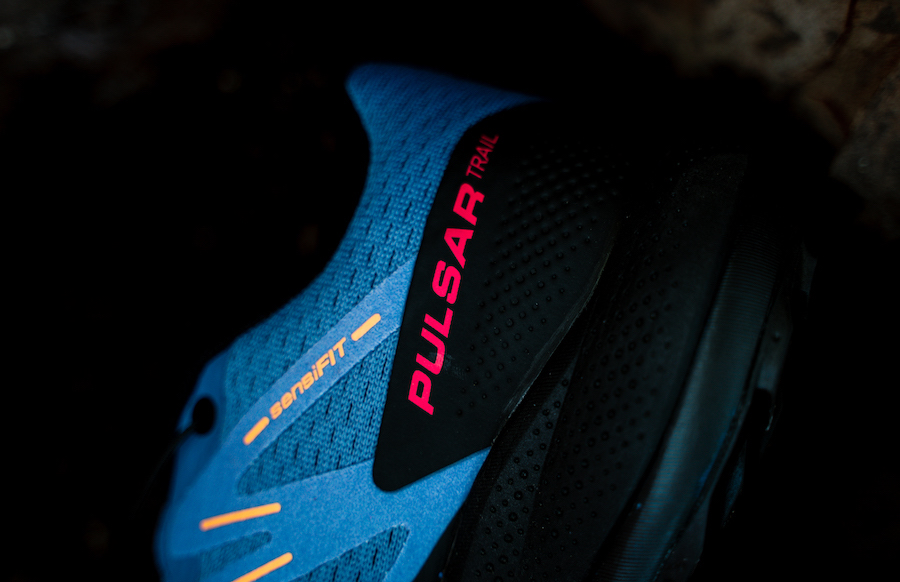
SAM: The Salomon Pulsar Trail is streamlined, aggressive, and high cushioned, but it feels and runs like a protective support shoe with a relatively low stack. There’s so much material in the upper: copious amounts of heel cup padding, a dual-layered upper mesh, an Endofit sleeve, and the plastic toe guard and heel cup. It’s enough material that it caused my foot to warm up and stay hot throughout the run. And man, does that padding soak up water. I think all the moisture from a wet run ended up in the shoe instead of my socks. And, for all the padding, there was still a little play in my heel security.
The Energy Surge foam here is comfortable, if firm, and protects your feet like you’re wearing armor plating, but it feels flat and sluggish. Where it should feel lively, it feels like an old pro resigned to doing its job the same good way it always has. Not bad, but not an exciting underfoot feel.
The stiff foam, flexible plate, and rockered sole geometry did not work well for my stride. Since there’s no real spring to the foam, the feel of propulsion relies on the rocker and the plate working in tandem. The sole felt stiff through my stride until the rocker dropped me onto my toes. However, since the plate doesn’t have much rigidity, I was left with a dead feeling at toe-off that stalls forward momentum. There’s enough bend in the forefoot that the screen guard around the toes started bending inward into my big toes. I get about the same flex in similarly stacked plateless shoes, like the Altra Timp 4.
Finally, on some wet pavement and hard-packed gravel, the grip on the shoe feels a little squirrely.
Shop Salomon Pulsar Trail – Men
Shop Salomon Pulsar Trail – Women
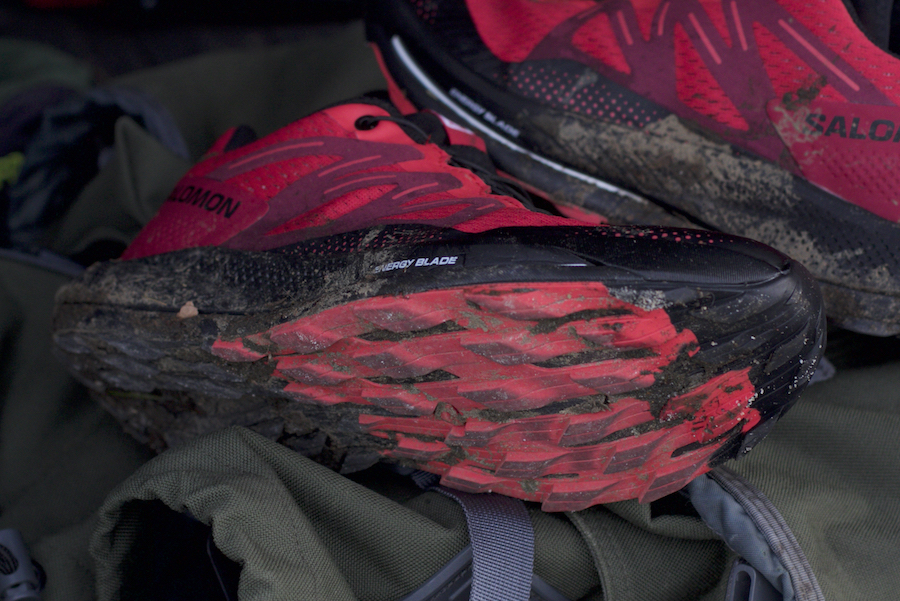
SAM: I’m torn on how to feel here. The Pulsar Trail has that amazing Salomon look and durable build, but it feels a little slow and bloated underfoot. Does this shoe probably need to be stripped down to its (very good) bones to live up to its goal of speed at an affordable price? Yeah, I think it does. Is it still a good and very tough shoe at a killer price point? Absolutely it is.
It’s comfortable, protective, rides well at all distances, and has a plate (even if that plate doesn’t do a whole lot). This is probably best sold as an entry-level trail runner for someone who wants the bells and whistles without the price tag.
You can pick up the Salomon Pulsar Trail for $130 by using the shop link below.
Shop Salomon Pulsar Trail – Men
Shop Salomon Pulsar Trail – Women

Want to learn more about how our review process works? Check out this guide.
Have something to say? Leave a Comment

Sam lives in Baltimore with his wife and two kids and spends his days fixing espresso machines for Ceremony Coffee Roasters. He runs with the Faster Bastards when he can, races ultras, and has been working on completing the AT section by section. He thinks the best days are made of long miles on nasty trails, but that a good surf session, a really stunning book, or a day of board games are pretty all right too.
All-time favorite shoes: Saucony Xodus Ultra, Topo Athletic Ultraventure 3, Altra Lone Peak
More from Sam